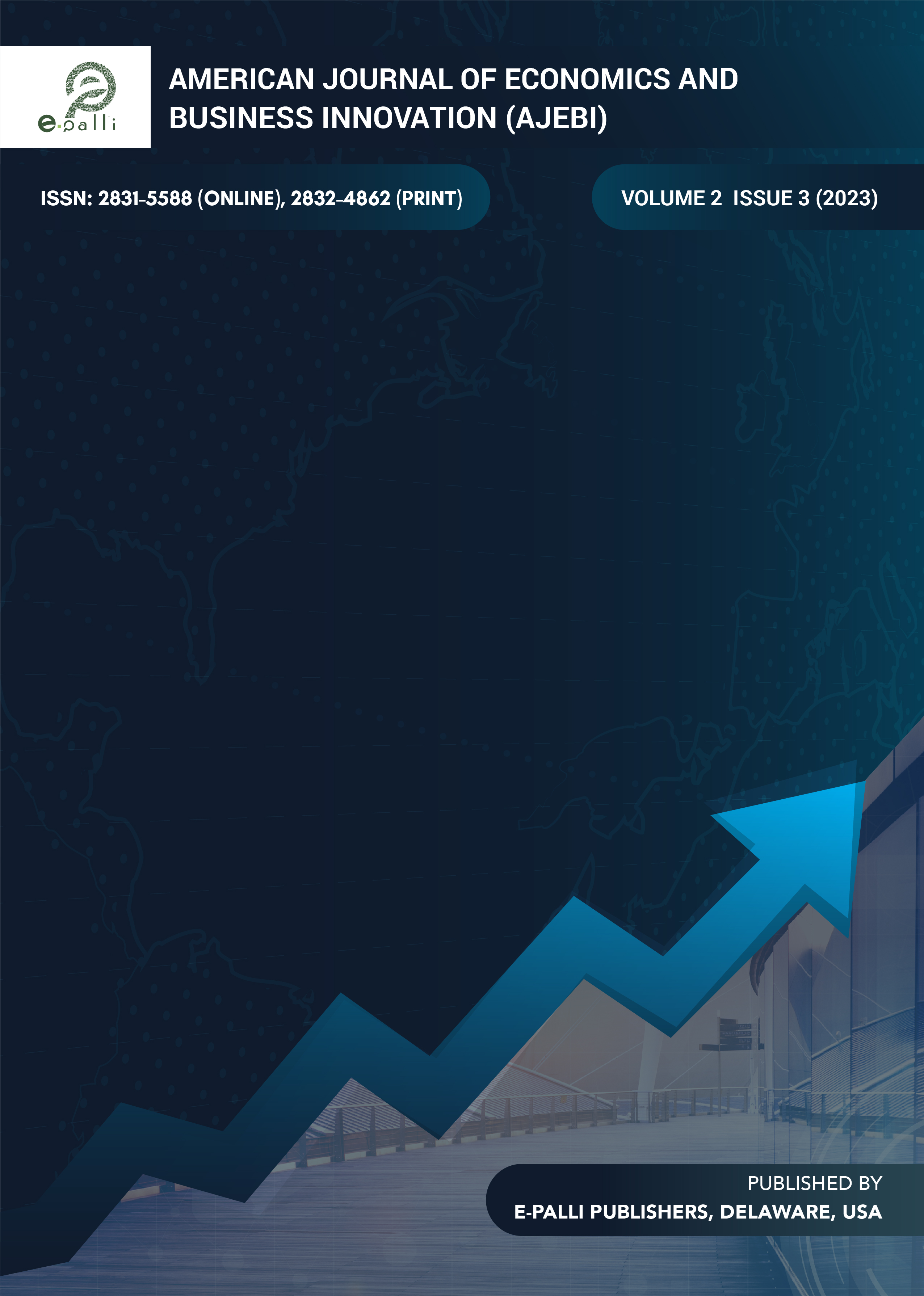Social Innovation: An Impulsion for Resilience of One-Acre Fund Household Livelihoods in Kenya
DOI:
https://doi.org/10.54536/ajebi.v2i3.1941Keywords:
Social Innovation, One-Acre Fund, Resilience, Household LivelihoodsAbstract
The purpose of this study was to determine the effects of social innovation on the resilience of one-acre fund household livelihoods. Resilience is the ability to bounce back after a period of such shocks. . In that connection, there is a need to innovate alternatives that optimize resilience. Innovation has been studied in terms of technological innovation, business innovation, and or general innovation but not social innovation in connection to resilience. Social innovation uniquely matches resilience efforts at the vulnerable households’ level. However, this connection has not been studied rigorously. The findings revealed that social innovation contributed statistically significantly to resilience of one-acre fund household livelihoods (β =.832, p=.000) and accounted for 69.3% change in resilience of one-acre fund household livelihoods ΔR2=0.693, ΔF (1, 308) =167.748, p=.000.The study concluded that, if more emphasis is put in social innovation, more resilience of one-acre fund household livelihoods would be realized. Therefore, an enhanced leads to resilience for households’ livelihood. The study recommends that as a coping mechanism for food insecurity, farmers should adopt an acre fund model. this study advises the policymakers to consider the production of maize by use of one acre fund skills like social innovation to minimize the inefficiency levels and increase production by minimizing the cost of inputs and cost of capital The study highlights the applicability of social innovation in a new context and further facilitates creation of knowledge and growth of literature in the social innovation sphere.
Downloads
References
Bless, C., Smith, C., & Kagee, A. (2006). Fundamentals of social research methods:An African perspective: JUTA and co.
Hazel, L. (2015). The role of relationships in building capabilities for social innovation: The caseof social enterprises. Unpublished Thesis
Khan, S. H.,Yasir, M., Shah, H. A., & Majid, A.(2021).Role of social capital and social value creation in augmenting sustainable performance of socialenterprises: Moderating role of social innovation. Pakistan Journal of Commerce and Social Sciences (PJCSS), 15(1), 118-137. http://hdl.handle.net/10419/233770
Kothari, C. (2004). Research methodology: Methods and techniques: New Age International (P) Ltd.
Meister, B. P., Horlings, L. G., & Bulder, E. (2021). Tackling societal challenges together: Co- creation strategies and social innovation in EUpolicy and funded projects: Wiley Periodicals LLC.
Mulgan, G. (2012). Th theoritical foundation of Social innovation. In A. Nicholls, & A. Murdock, Social Innovation (pp. 35-65). Palgrave MacMillan
Nachmias, F., & Nachmias, D. (1992). Research methods in social sciences: St Martins press.
Newman, I., & Benz, C. (1998). Qualitative-quantitative Research Methodology: Exploring the Interactive : Southern Illinois University Press.
Njuguna, B. (2015). Factors influencing sustainability of social entrepreneurship projects: a case of Iko toilet project Nairobi county, Kenya. Nairobi: Unpublished Thesis
OECD. (2012). Innovation for development. Paris: OECD publishers.Oeij, P., Vaas, F., Torre, W. v., & Dhondt, S. (2019). Understanding social innovation as an innovation process: Applying the innovation journey model. Journal of Business Research, 243-254. https://www.oecd.org › innovation › inno
Phills, J., Deiglmeier, K., & Miller, D. (2008). Rediscovering social innovation. Stanford Social Innovation Review Fall, 34-43.https://www.researchgate.net/publication/242511521
Schubert, S. F. (2018). Growth and Unemployment: Short-run and Long-run Tradeoffs: Free University of Bozen-Bolzano.
Wenyuan Li, Sadick, Abubakari, M., Musah, A.-A. I., Mustapha, & Salisu. (2018). The Moderating Effect of Social Innovation in Perspectives of Shared Value Creation in the Educational Sector of Ghana. Sustainability mdpi, 1-26. https://doi.org/10.3390/su10114216
Workman, J. P., Subin, I., & Jr. (2004). Market Orientation, Creativity, and New Product Performance in High-Technology Firms. Journal of Marketing, 68(2), 114-132. https://doi.org/10.1509/jmkg.68.2.114.27788
Downloads
Published
Issue
Section
License
Copyright (c) 2023 Boniface B. Lihanda, Caroline Oloo, Fredrick O.Aila

This work is licensed under a Creative Commons Attribution 4.0 International License.



